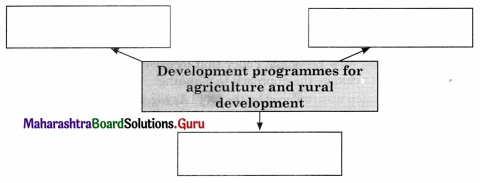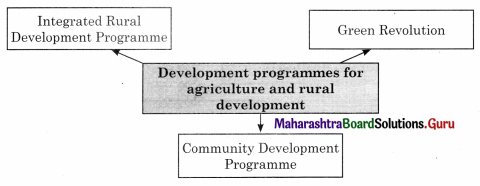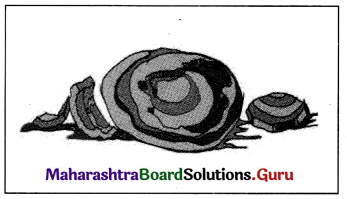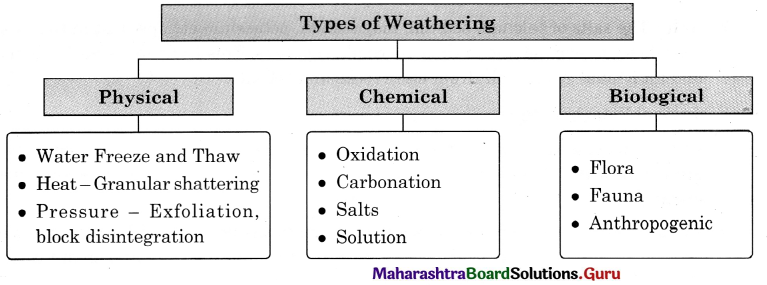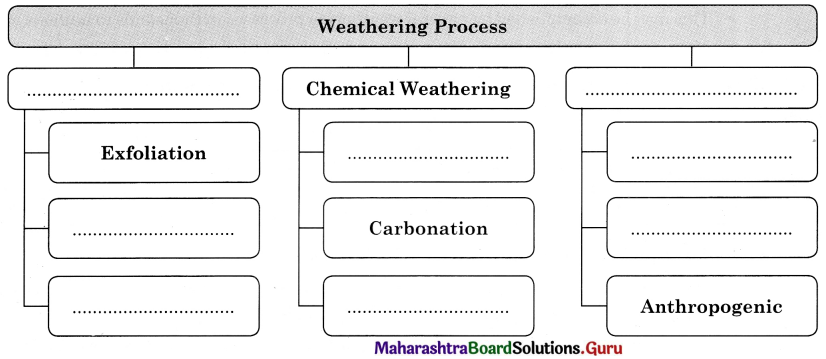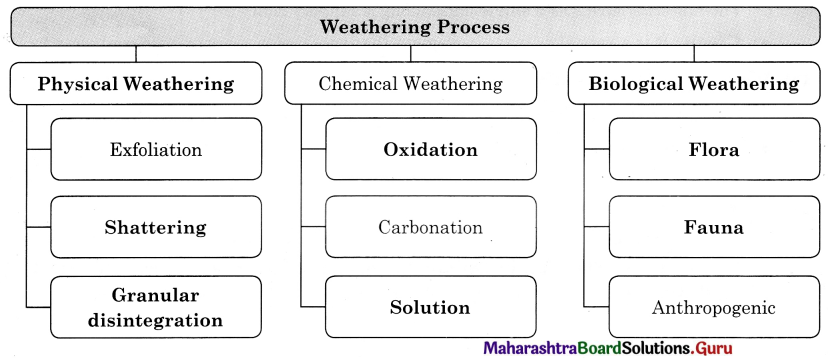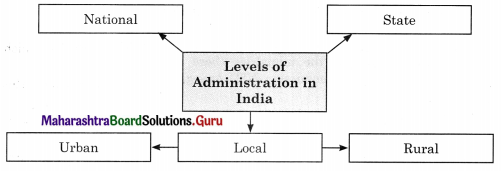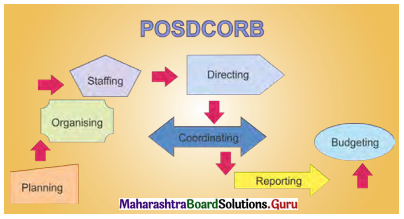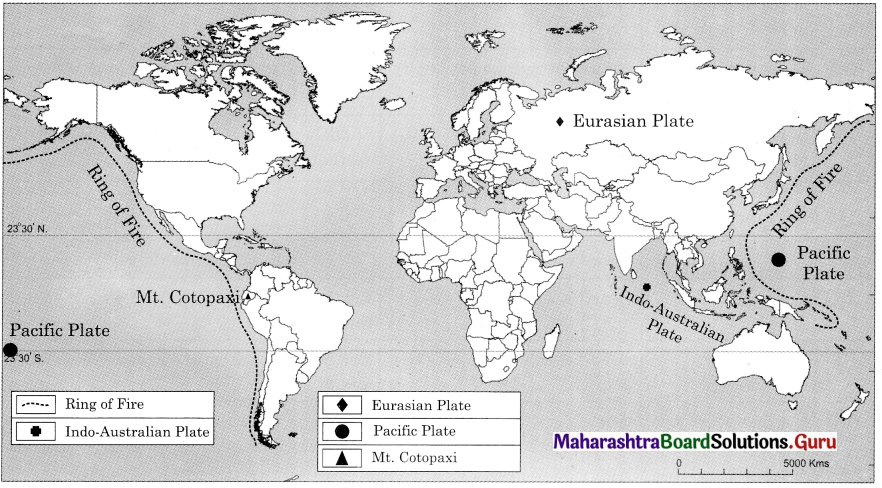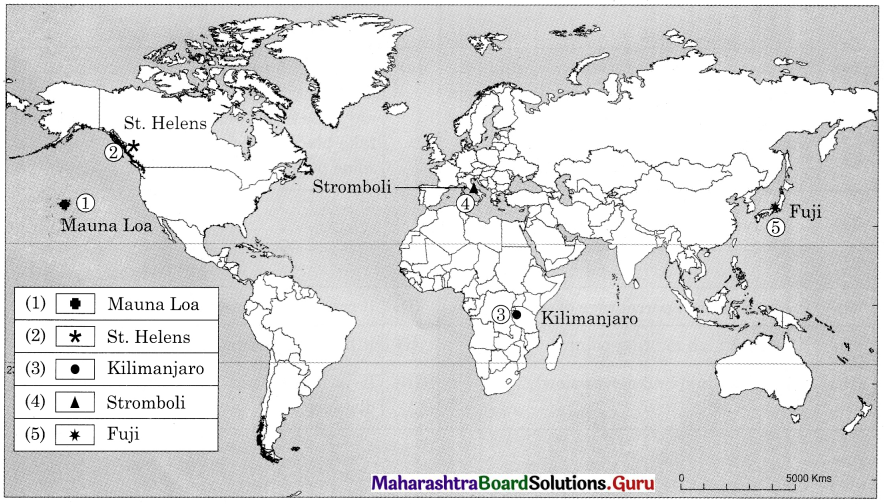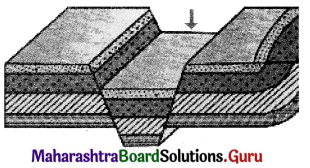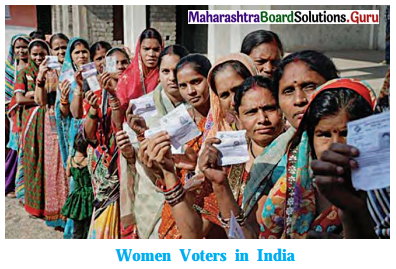Balbharti Maharashtra State Board Class 11 Political Science Important Questions Chapter 9 The World Since 1945 – I Important Questions and Answers.
Maharashtra State Board 11th Political Science Important Questions Chapter 9 The World Since 1945 – I
1A. Choose the correct alternative and complete the following statements.
Question 1.
After the Second World War, East Germany came under the control of ____________ (Soviet Union, USA, West Germany, England)
Answer:
Soviet Union
Question 2.
After World War I, ____________ was created to maintain peace and security. (European Union, League of Nations, UNO, SAARC)
Answer:
League of Nations
![]()
Question 3.
The ____________ is the Chief Administrative Officer of the UN. (Trusteeship Council, President, Security Council, Secretary-General)
Answer:
Secretary-General
Question 4.
The UN Security Council has ____________ permanent members. (5, 10, 15, 193)
Answer:
5
Question 5.
The seat of the International Court of Justice is in ____________ (New York, Geneva, Paris, The Hague)
Answer:
The Hague
Question 6.
____________ coined the name United Nations. (Woodrow Wilson, Pandit Nehru, Franklin Roosevelt, Josef Stalin)
Answer:
Franklin Roosevelt
Question 7.
The UN Charter was signed in 1945 by representatives of ____________ countries. (24, 50, 101, 172)
Answer:
50
Question 8.
____________ used the term ‘iron curtain’ to refer to the division of Europe into the West and the East. (Woodrow Wilson, Franklin Roosevelt, Richard Nixon, Nikita Khrushchev)
Answer:
Woodrow Wilson
![]()
Question 9.
The Asian nation ____________ had a war from 1950-1953. (Japan, China, Korea, Vietnam)
Answer:
Korea
Question 10.
In 1959, heads of USA and USSR met at ____________ to seek serious dialogue. (New York, Moscow, Berlin, Camp David)
Answer:
Camp David
1B. Identify the incorrect pair in every set and correct it.
Question 1.
(a) Mao Zedong – Korea
(b) Nikita Khrushchev – Soviet Union
(c) President Eisenhower – USA
(d) Woodrow Wilson – England
Answer:
(a) Mao Zedong – China
Question 2.
(a) France – Capitalist Bloc
(b) Bulgaria – Communist Bloc
(c) Turkey – NATO
(d) Thailand – SEATO
Answer:
(c) Turkey – CENTO
1C. State the appropriate concept for the given statement.
Question 1.
The policy suggested by Khrushchev that the US capital system and Soviet system would have to co-exist.
Answer:
Peaceful Co-existence
![]()
Question 2.
Process of regional cooperation.
Answer:
Regionalism
Question 3.
Meetings of heads of states or governments to discuss pertinent issues.
Answer:
Summit Meetings
1D. Answer in one sentence.
Question 1.
Which organization was created after World War I to maintain peace and order in the world?
Answer:
The League of Nations was created after World War I to maintain peace and order in the world.
Question 2.
Which countries emerged as superpowers after the Second World War?
Answer:
USA and USSR emerged as superpowers after the Second World War.
Question 3.
What is the main purpose of the UNO?
Answer:
The main purpose of the UNO is the maintenance of international peace and security.
Question 4.
Name some countries under Soviet influence post-1945.
Answer:
Some countries under Soviet influence post-1945 were East Germany, Poland, Hungary, Bulgaria Romania, Albania, and Czechoslovakia.
![]()
Question 5.
Name some countries under US influence post-1945.
Answer:
Some countries under US influence were England, France, Spain, Belgium Netherlands, Greece, and West Germany.
Question 6.
Which Asian nation adopted communism in 1949?
Answer:
China, under Mao Zedong, adopted communism in 1949.
Question 7.
Which communist nations signed a pact in 1950?
Answer:
USSR and China signed a pact in 1950.
Question 8.
In 1959, which world leaders met at Camp David?
Answer:
In 1959, President Dwight Eisenhower of the United States and Prime Minister Nikita Khrushchev of the Soviet Union met at Camp David in the United States.
Question 9.
What is sustainable development?
Answer:
Sustainable development refers to development that promotes the protection of the environment and social well-being along with economic progress.
1E. Complete the sentences by choosing the appropriate reason.
Question 1.
SAARC is considered a regional organisation because
(a) it aims to establish regional cooperation in South Asia.
(b) it is a narrow scope organisation that leads to hostility in the region.
(c) it is in opposition to world peace and stability
Answer:
(a) it aims to establish regional cooperation in South Asia.
![]()
Question 2.
Camp David Summit was a turning point in the history of the Cold War
(a) it was an open expression of Cold War hostility
(b) it led to the formation of NATO and other military alliances
(c) it was the first serious attempt at seeking a dialogue between the Cold War rivals.
Answer:
(c) it was the first serious attempt at seeking a dialogue between the Cold War rivals.
1F. Find the odd word in the given set.
Question 1.
USA, China, Russia, India.
Answer:
India (it is the only NAM nation)
Question 2.
NATO, ASEAN, CENTO, SEATO.
Answer:
ASEAN (not a Cold War military alliance)
Question 3.
ASEAN, NATO, SAARC, E.U.
Answer:
NATO (a military alliance)
2A. State whether the following statements are true or false with reasons.
Question 1.
The League of Nations failed in achieving its purpose.
Answer:
This statement is True.
- The League of Nations was created in 1920 after the First World War as an international organisation to establish peace and order in the world.
- However, the League failed to stop aggression by the Nazi and Fascist parties or to eliminate conflicts in Europe eventually leading to the Second World War.
![]()
Question 2.
After the Second World War, the world ceased to be ‘Eurocentric’.
Answer:
This statement is True.
- The world had been described as ‘Eurocentric’ because of the dominant position enjoyed by major European powers like England, Francs, etc, in the 19th and early 20th centuries.
- Most of these powers such as France, Italy, Germany, England were devastated during the Second World war leading to the USA and USSR becoming superpowers in the world. Thus there were bipolarity post-1945.
Question 3.
The UNO was established in 1945.
Answer:
This statement is True.
- The League of Nations which was established after the First World War failed to secure world peace and stability.
- After the Second World War, the UN was established in 1945 to maintain world security and peace, protect human rights, and promote sustainable development.
Question 4.
The Trusteeship Council is the most significant organ of the UNO.
Answer:
This statement is False.
- The Trusteeship Council was set up to provide international supervision for 11 Trust Territories to prepare these towards self-government.
- The Security Council is considered the most significant organ of the UNO. It suspended operations on 1st November 1994, as all the Trust Territories had attained independence.
Question 5.
The hostile relations between the USA and USSR were called the Cold War.
Answer:
This statement is True.
- USA and USSR became superpowers after the Second World War (1945). There were ideological and economic differences between the USA and USSR and also a struggle for political influence in Europe.
- The hostile relations led to the East-West division of Europe, setting up of military alliances and armaments build-up but stopped short of a war actual war. This is referred to as the cold war.
![]()
Question 6.
The Korean War was actually a proxy of the Cold War.
Answer:
This statement is True.
- The Korean War (1950-1953) began when North Korea backed by Communist China and the USSR attacked South Korea.
- South Korea was helped by the US and its allies. Thus, the Korean War seemed to be an actual manifestation of the Cold War.
2B. Complete the concept maps.
Question 1.

Answer:

Question 2.

Answer:
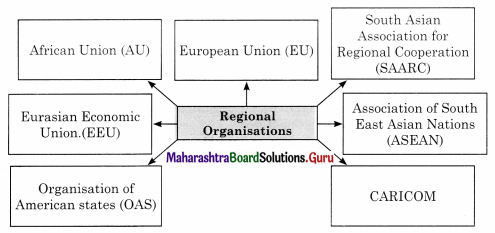
3. Answer the following.
Question 1.
Write about the Berlin Wall (Division of Berlin).
Answer:
When the Second World War ended, the Soviets had control over East Germany while the USA, UK, and France had control over West Germany. This was the division of Germany. The city of Berlin, which was the capital of Germany was also divided between East and West Berlin. East Berlin was under Soviet influence while West Berlin was under American, British and French control. The city of Berlin was inside the territory of East Germany. Thus, West Berlin was surrounded by East Germany on all sides.
![]()
Question 2.
What was referred to as the “Iron Curtain”?
Answer:
The former British Prime Minister, Winston Churchill, during his visit to the United States in 1946, gave a speech at the Westminster College in Fulton where he described the situation in Europe as “From Stettin in the Baltic to Trieste in the Adriatic, an iron curtain has descended across the continent.”. This speech was the first clear expression of the division of Europe between the West and the East, between the capitalist and communist ideology.
Question 3.
Write about the Bandung Conference.
Answer:
The Bandung Conference (1955) was the first Afro-Asian conference that sought to broad base the concept of regionalism to include the countries of Africa. The conference had 24 participating countries besides the sponsoring countries, namely Burma (now, Myanmar), Ceylon (now, Sri Lanka), India, Indonesia, and Pakistan.
The main purposes of the conference were
- To promote goodwill and cooperation
- To consider social, economic, and cultural problems and problems of special interest to Asian and African people.
- To view the position of Asia and Africa in the world today and the contribution they can make to world peace.
The Bandung Conference was a historic event. It tried to spread the concept of regionalism to Asia and Africa.
Question 4.
Write about NATO.
Answer:
The North Atlantic Treaty Organisation (NATO) is an inter-government military alliance of 29 countries from North America and Europe. It was established in April 1949. The members include its 12 original members and others who joined later. The founding countries were the USA, UK, Belgium, Canada, France, Denmark, Norway, Iceland, Italy, Portugal, Netherlands, and Luxembourg other NATO members are Greece, Turkey, West Germany, Spain, Poland Hungary, Czech Republic, Bulgaria, Estonia, Latvia, Lithuania, Slovakia, Slovenia, Romania, Albania. The last nation to join NATO in 2017 was Montenegro.
Question 5.
Write about military alliances formed by the U.S (1945 – 55).
Answer:
The US-led capitalist bloc included alliances such as NATO (North Atlantic Treaty Organisation) formed in 1949 with 12 founding countries like USA, UK, Canada, France, etc., and later joined by Greece, Turkey, West Germany, Spain, Poland Hungary, Czech Republic, Bulgaria, Estonia, Latvia, Lithuania, Slovakia, Slovenia, Romania, Albania. Montenegro.
- ANZUS: (1952) comprising of Australia, New Zealand, and the USA.
- southeast Asia Treaty Organisation (SEATO): (1954) which included Thailand, Philippines, Australia, New Zealand, France, UK, US.
- Central Treaty Organisation (CENTO): (1955) which included Turkey, Iraq (Iraq withdrew in 1958), Iran (Iran withdrew in 1979), and Pakistan.
![]()
Question 6.
Write about the UN Security Council. (UNSC).
Answer:
The UN Security Council has the primary responsibility for the maintenance of international peace and security. It has 15 Members (5 permanent and 10 non-permanent members).
The permanent members include the USA, UK, Russia, France, and China. They have ‘veto’ power. Non-permanent members are elected for two-year terms by the General Assembly. Some of these members are Belgium, South Africa, Indonesia, and Germany. India has been a non-permanent member of the UNSC.
4. Answer the following in detail with reference to the given points.
Question 1.
Elaborate on the UNO.
(i) Establishment and Total membership of the UNO.
(ii) Main organs of the UNO.
(iii) Permanent members of the Security Council.
(iv) Secretary-General of the UN.
Answer:
(i) Establishment and Total membership of the UNO: The UNO was established on 24th October 1945. The UN declaration was signed in San Francisco by 50 member states. At present, it has 193 members.
(ii) Main organs of the UNO: The main organs of the UNO are General Assembly, Security Council, Economic and Social Council, Trusteeship Council (suspended operations in 1994), International Court of Justice, and Secretariat.
(iii) Permanent members of the Security Council: There are 5 permanent members of the Security council i.e., the USA, the UK, Russia, France, and China.
(iv) Secretary-General of the UN: The Secretariat comprises the Secretary-General and UN staff members, who carry out the day-to-day work of the UN. The Secretary-General is the Chief Administrative Officer of the UNO. He is appointed by the General Assembly on the recommendation of the Security Council for a five-year term.
![]()
The present Secretary-General is Antonio-Guterres. The first Secretary-General was Trygve Lie (1946-1952) Other Secretary-General were Dag Hammarskjold, U Thant, Kurt Waldheim, Javier Perez, Boutros Boutros-Ghali, Kofi Annan, Ban-ki-Moon.


